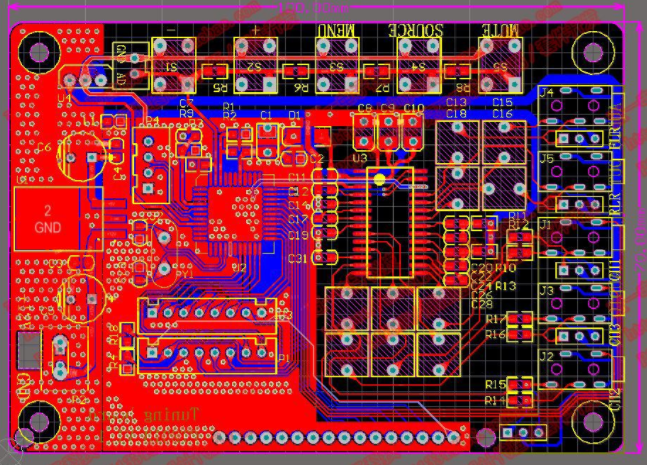PCB plate-makingmethods are divided into: direct plate-making method, direct-indirect plate-making method, and indirect plate-making method. The materials used are: photosensitive paste, photosensitive film, photosensitive film, indirect film
1: PCB direct board method
Method: Coat a certain thickness of photosensitive paste (usually a diazonium salt photosensitive paste) on a well-stretched screen, then coat and dry, then use a plate-making film and load it into the medium, and develop after exposure, Rinse, and dry to become a screen printing plate.
PCB process: The preparation of photosensitive paste has been bandaged net-degreasing-drying-coating-drying-exposure-development-drying-repair-final exposure-the method and function of each part of the sealing net
PCB degreasing: Use a degreasing agent to remove the grease on the screen, which will make the photosensitive paste and the screen completely bond together, making it difficult to peel off.

Drying: Dry the moisture, avoid a little mesh, because too high temperature will change the tension, and its temperature should be controlled at 40 to 45 degrees Celsius.
Preparation of photosensitive paper pulp: mix the photosensitizer and purified water evenly, and leave it for 8 hours after use.
Coating: Use the gap to evenly coat the screen. According to the coating method, it can be divided into automatic coating machine coating and manual coating. The number of coating films can be determined according to the actual situation.
When coating the film, the surface of the squeegee should be painted first. The purpose is to fill the gap between the meshes and avoid bubbles, and then apply the coating on the printed surface (the side in contact with the PCB). At present, you can use the automatic glue applicator every time. Increase the film thickness of 3um, so the main choice is the PCB welding net coating method: PCB squeegee surface coating twice-drying-coating the printed surface three times-drying-three times-drying-drying-three times-the printing surface is coating three All over-dry.
Coating square misstatement:
1: The correct squeegee surface, whether the thickness of the printing surface is appropriate and meets the requirements.
2: Disadvantage of thin coating (printed surface): poor durability.
3: Disadvantages of excessively thick coating on the surface of the squeegee: As the light-sensitive slurry on the surface of the squeegee is too thick, the light is uneven. When the developing water is rinsed, the ink on the rough surface is poured into the film, causing the film to fall off and cause mesh The life span is shortened.
4: The surface coating of the scraper is too thin: poor durability.
Drying: Make the photosensitive paste dry uniformly, avoid the external drying of the photosensitive paste and the internal moisture. Too high temperature will cause the external photosensitive paste to dry first but not the inside, and after the screen life is restored, its temperature should be maintained at 40" 45 Celsius, the time is about 10 minutes, adjust the drying time appropriately according to different film thicknesses.
Exposure: Proper exposure can cause the photosensitive paste to condense and develop a clear image through the substrate.
Factors affecting the quality of the network version:
1: Correct exposure energy
Exposure and vacuum
2: Cleaning the glass of the exposure machine
Generally, the exposure energy is adjusted with the exposure time. The production should be based on the number of meshes and the layer thickness of the film. The exposure measurement is used to determine the correct exposure time for various types of screens.